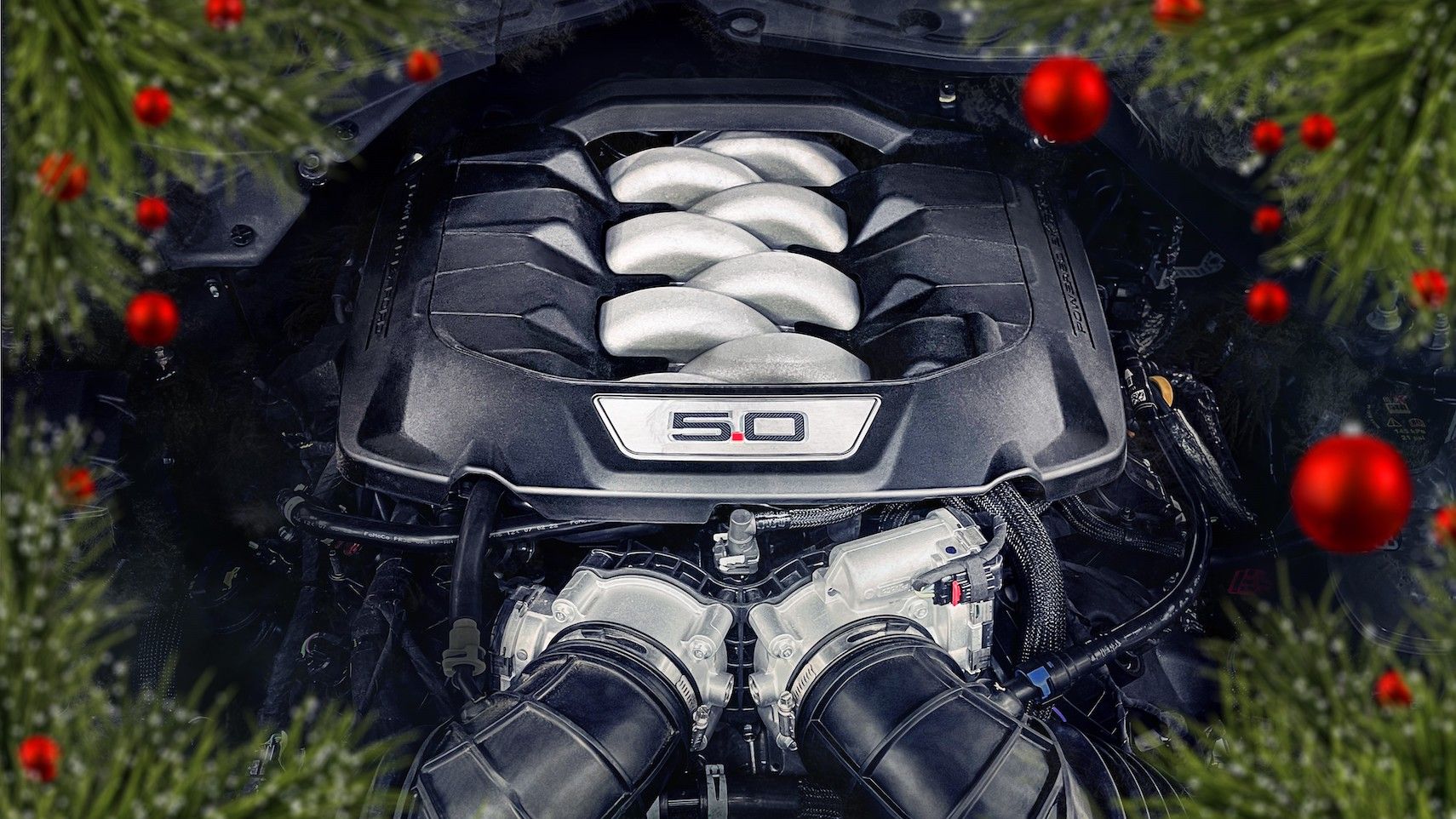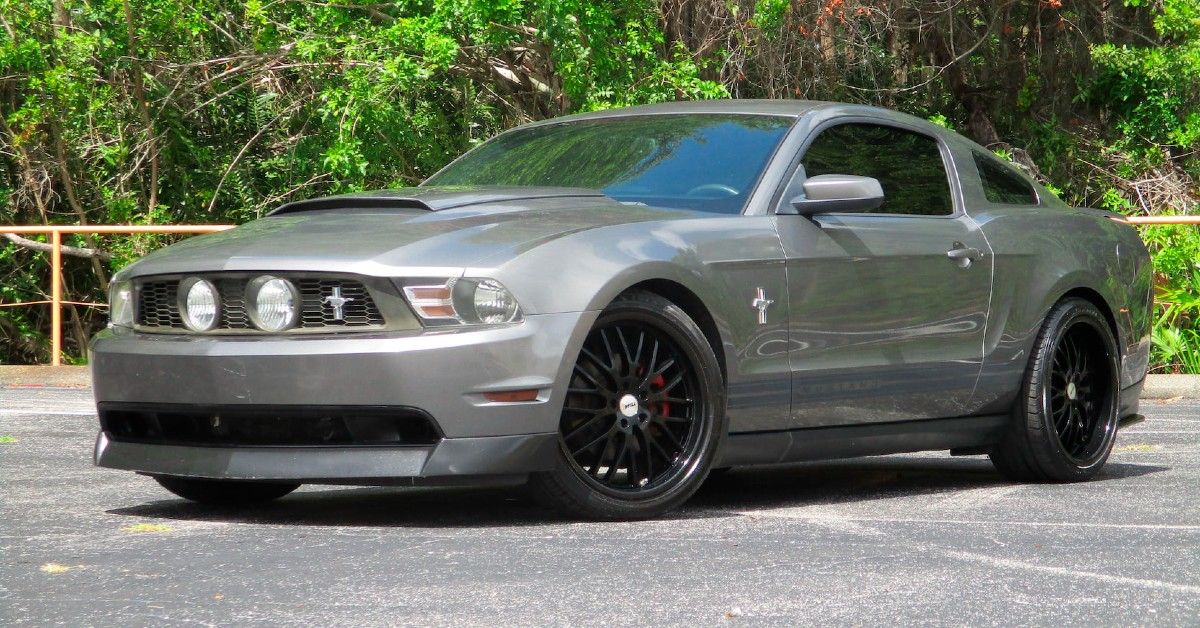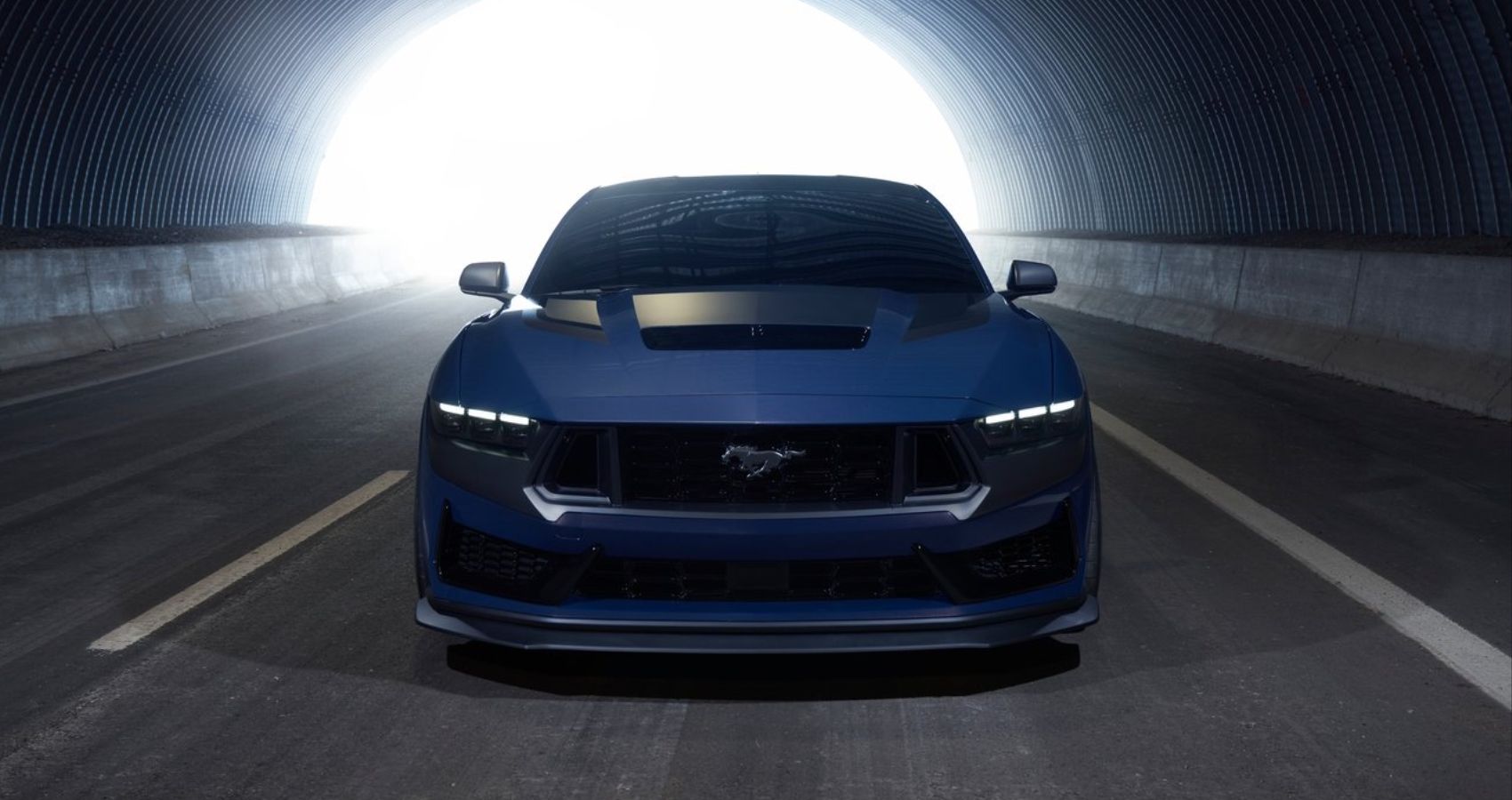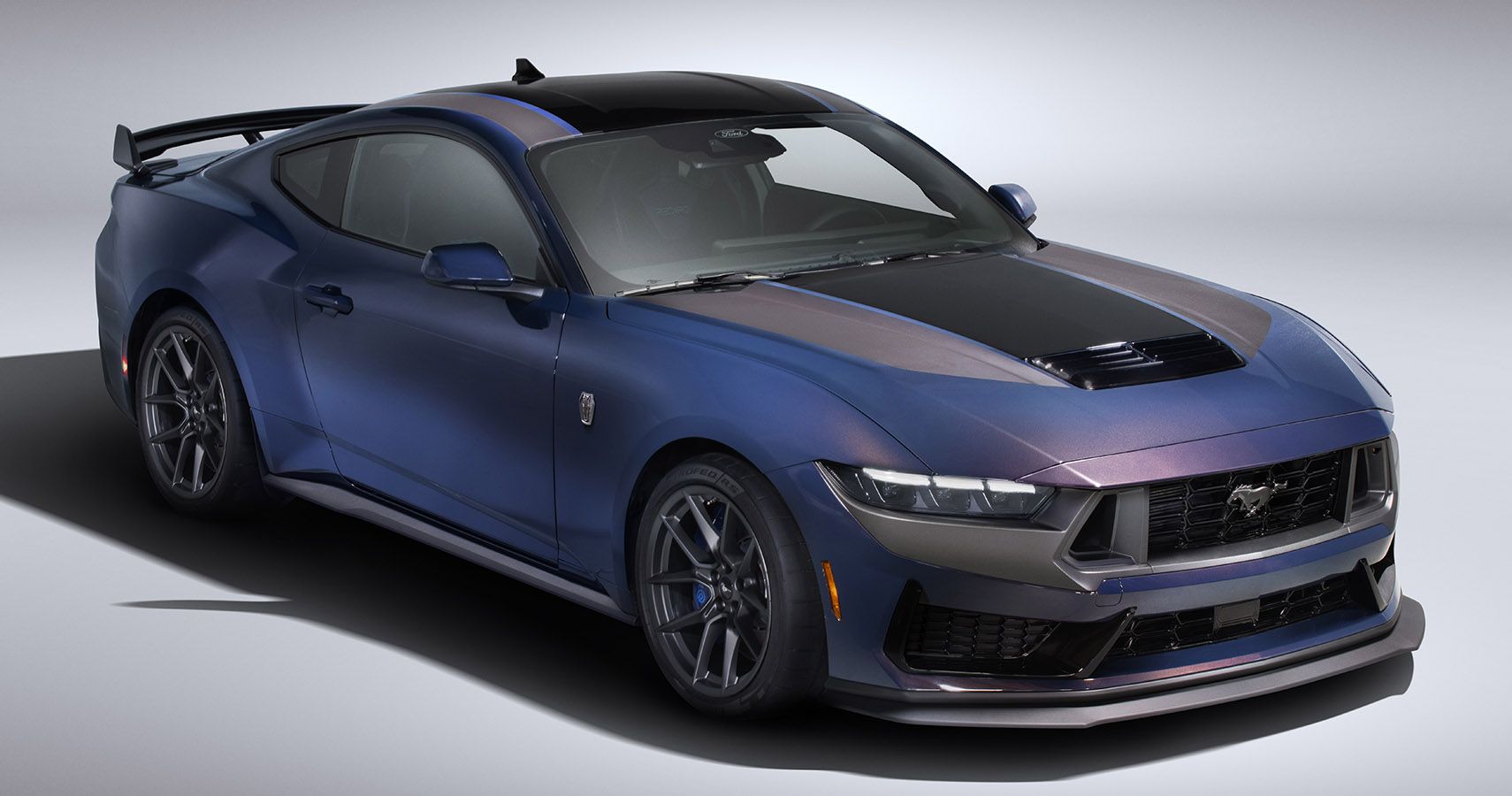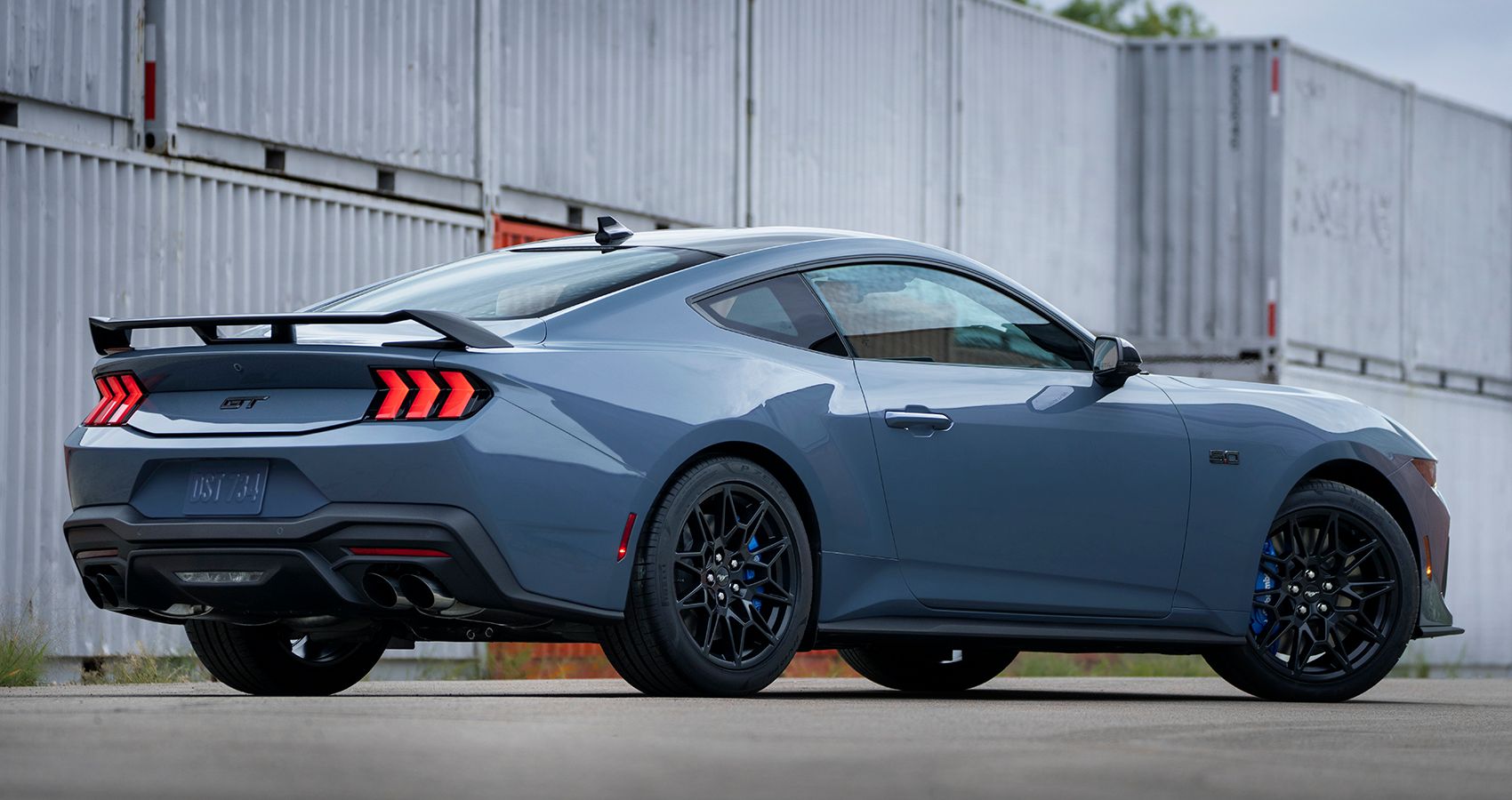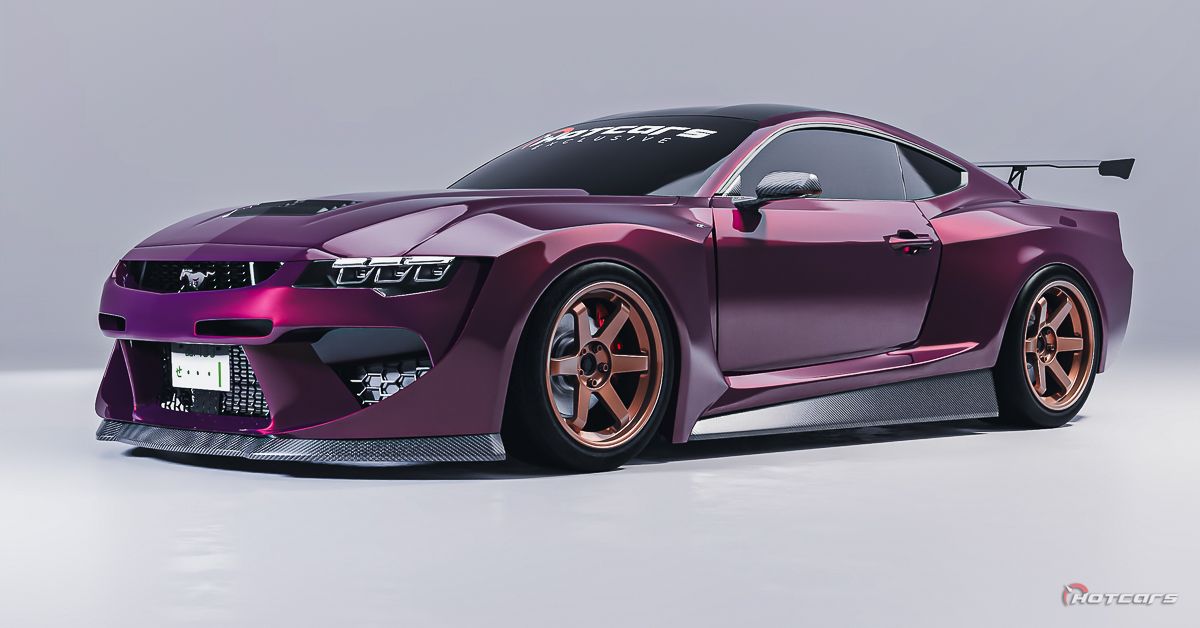Summary
- ]The 5.0-liter Coyote V8 made its return in 2011 and replaced the less powerful 4.6-liter V8 in the Mustang, satisfying the demand for a more powerful engine.
- The Coyote V8 has evolved over the years, with different generations and revisions. The latest iteration boasts upgrades from the high-performance Shelby GT500.
- Ford has not set an end date for V8 engine production, and the presence of V8 engines in Mustangs may continue for a considerable amount of time, although electrification may eventually replace them.
The Coyote V8 is now a firm fixture in the 2024 Ford Mustang range, with the powerplant under the hood of the Dark Horse and the GT versions of the new muscle car. The engine made its return to the Mustang in 2011, and provided a big leap in performance over the 2005-2010 editions of the famous muscle car. The Coyote has since appeared in the Ford F-150 pickup truck as well.
With Ford doubling down on 2024 Mustang production and seemingly not ready to wave goodbye to the V8 engine just yet, it looks like the mighty Coyote powerplant may be with us for some time yet.
The 5.0-Liter V8 made It's Return In 2011
The 5.0-liter Coyote V8 made its debut at the end of 2010, with the powerplant chosen for the upcoming 2011 model of the Ford Mustang muscle car. The 5.0 engine moniker had always been a popular one within the Mustang Fox-Body community, and V8 Mustang owners often simply referred to their Mustang’s as “five point oh” and it was this that partly led to Ford bringing the moniker back for 2011. Ford also needed an engine to compete with the 6.2-liter LS3 that was in the Chevrolet Camaro at the time.
The Coyote name was actually used as a code, and according to MotorTrend, Ford initially didn’t want people to use that name for the new engine. But ever since then, the Coyote moniker has stuck. The first generation of the Coyote V8 had 420 hp and 390 lb-ft of torque and it proved to be a big leap over the engines that were in the 2005-2010 Mustang. The 5.0-liter V8 replaced the 4.6-liter V8 of those Mustangs, and it was something that instantly pleased Mustang fans who had been crying out for a newer, more powerful engine to go under the hood of the muscle car. It provided a big power boost over the 300 hp and 320 lb-ft torque version of the three-valve 4.6-liter V8 seen in the outgoing edition of the Mustang.
Ford constructed the new 5.0-liter engine from a clean slate, with power, efficiency, and economy all in mind for the powertrain. Keeping the V8 modular was a top priority, and Ford would use a strong aluminum block with deep skirting, high-flow aluminum heads and variable cam timing to create the new V8. The project to engineer the new Coyote actually began back in 2007. The initial goal was an engine that could produce 370-380 hp before Ford settled on the 400 hp figure, providing a 100 hp increase over the 4.6-liter V8 engine.
The 5.0-Liter Coyote Would Evolve Over The Years
2024 Ford Mustang Engine Specs
Engine | 5.0L | 2.3L EcoBoost | 5.0L Coyote |
|---|---|---|---|
Manufacturer | Ford | Ford | Ford |
Production Years | 2011 - present | 2015 - Present | 2011-Present |
Configuration | V8 | Turbocharged Four-cylinder | V8 |
Displacement | 5.0-liter (302.1 ci) | 2.3-liter (140 ci) | 5.0-Liter (302.1 ci) |
Power | 480 hp | 315 hp | 500 hp |
Torque | 415 lb-ft | 350 lb-ft | 418 lb-ft |
Fuel | Gas | Gas | Gas |
Noteworthy Applications | Ford Mustang GT, Ford F-150, Ford Falcon | Ford Mustang EcoBoost, Ford Bronco, Ford Focus RS | Ford F-150, Ford Mustang GT |
Ford would split the Coyote V8 up into different generations as the years went on, with Gen 1 being from 2011-2014, Gen 2 2015-2017 and then Gen 3 from 2018-2019. Initially, the engine was for just the Mustang but soon Ford would add the Coyote to their F-150 pickup truck. That first took place in 2011 and the engine is still offered today in the latest and greatest iteration of the pickup truck, with the F-150 Raptor R.
The first major revision to the Coyote V8 in 2015, with the engine now rated with more power at 435 hp as well as 400 lb-ft of torque. The biggest changes, though, would come in 2018. Direct injection was one big addition, and in the Coyote, it had a unique system. It combined high-pressure direct injection with low-pressure port injection seen in the previous models of the Mustang. This would further increase the power output of the Mustang, bumping it up to 460 hp and 420 lb-ft of torque. However, Ford was not finished there, as the new generation of Mustang has shown us.
The arrival of the seventh generation Ford Mustang ensured that a new, more powerful version of the Coyote V8 would go under the hood. It is in the Dark Horse Mustang that the engine is most potent, with the new 5.0-liter unit producing 500 hp thanks to big upgrades. The changes include modified pistons and connecting rods, features first seen in the high-performance Shelby GT500. In fact, the Dark Horse V8 is the first time Shelby upgrades have gone into the regular, Ford version of the Mustang engine.
Ford Is Committed To The V8 Engine For The Foreseeable
It doesn’t look like the V8 engine is going anywhere, anytime soon. At least not for a few years. As we discussed recently, a report from CarExpert stated that Ford has given reassurance that it won't be axing the V8 engine from the Mustang lineup soon. The report quoted Mark Rushbrook, global director of Ford Performance, as saying that at the Mustang Dark Horse in Charlotte that Ford has “not identified an end date” for the engine. A contrast from the likes of Chevrolet and Dodge who are ending muscle car production outright.
Ford are aiming to keep the V8 engine in their muscle cars for as long as possible. This seventh generation of the Mustang even sports two versions of the engine. The Coyote V8 we find under the hood of the Dark Horse and the version powering the Mustang GT. Going off previous iterations of the Mustang, we’d expect this generation to last at least a decade or so, ensuring that some form of V8 should be with us for some time. Rushmore also remarked that Ford might even develop a new Coyote V8, should customer demand and emissions regulations allow for it.
Ford as of now has no specific end date for V8 production. The survival is, of course, conditional on whether emission regulations force Ford’s hand. Plus, the Blue Oval is not shy about electrifying the Mustang. Witness the Mustang Mach-E that has already hit the market and seems to be enjoying a lot of success. Ford also announced in 2022 that it plans to invest $50 billion into EVs through to 2026, so while it isn’t going away just yet, electrification of the Mustang may one day replace that big old V8 motor under the hood.
Would Ford Create A Hybrid Mustang?
A possible solution to the thorny question of removing the combustion engine is whether or not Ford would create a hybrid version of the Mustang. Rushmore did say to CarExpert that it was on the table for the future. But as of right now, it's off the table as it would not make sense. But that doesn’t mean it won’t come back in the future. Maybe there is a hybrid future for the famous Coyote V8.
Sources: CarExpert, Ford

